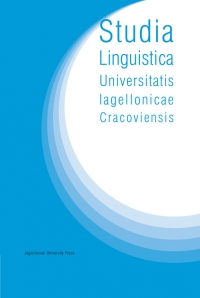An inquiry into the use and meaning of the forms ἔθηκε(ν) and θῆκε(ν) in the Iliad: Syntax and semantics
An inquiry into the use and meaning of the forms ἔθηκε(ν) and θῆκε(ν) in the Iliad: Syntax and semantics
Author(s): Filip De DeckerSubject(s): Morphology, Syntax, Semantics, Greek Literature, Theory of Literature
Published by: Wydawnictwo Uniwersytetu Jagiellońskiego
Keywords: augment; Homeric Greek morpho-syntax; injunctive; textual criticism;
Summary/Abstract: In this article, I discuss the use and absence of the augment in the 3rd singular forms ἔθηκε(ν) and θῆκε(ν) in the Iliad. In the previous article (De Decker 2020), I explained why I chose this corpus and determined the value of the different forms. Here I proceed to the actual analysis of the forms: do they confirm the previous syntactic and semantic observations that have been made for the use and absence of the augment (the clitic rule by Drewitt and Beck, the reduction rule by Kiparsky and the distinctions: speech versus narrative, foreground versus background and remote versus recent past)?
Journal: Studia Linguistica Universitatis Iagellonicae Cracoviensis
- Issue Year: 137/2020
- Issue No: 2
- Page Range: 135-155
- Page Count: 22
- Language: English

